Irish dance is certainly a distinctive form of dance. Some compare it to tap-dancing, but it’s not really. It’s distinctive and artistic, requires athleticism and flexibility, but many don’t fully understand the specifics of the dance form. There are a whole lot of misconceptions and myths regarding Irish dance, and its requirements.
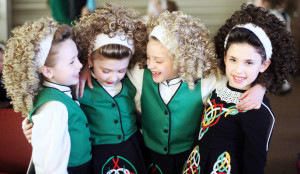
Captured by Kim Photography
Wigs:
While many of the dancers you’ll see these days wear wigs, they aren’t really “part” of Irish dancing — they are more a convenience.
“When I began dancing,” Trinity Academy of Irish Dance Director, Natalie Howard recalls, “we would curl our hair in those pink Goody foam rollers the night before [in order to get those bouncy curls synonymous with Irish dancing]”
These types of tight curls, similar to the regimens that other sports, such as cheerleading or other forms of competitive dancers utilize to ensure everyone has a cohesive look onstage.
However, with Irish dancing it goes beyond convenience, as many feiseanna (or dance competitions for those not familiar with the lingo) have many rounds of competing, which obviously cause you to perspire and your hair to fall as a result from the exertion of competing — requiring repeated rounds of curling, hair-spraying, back-combing which over time does quite a lot of damage to the hair. Wearing the wigs, which automatically ensures the entire dance troupe looks uniform also saves your natural hair from damage and breakage.
Why the curly hair? Back in the day, the Irish would gather after Sunday church at the main crossroads of their town to dance. Since this took place after church, the girls would have their “Sunday best” hair, which was usually curled. This curly hair has become the trademark of an Irish dancer.
Music:
Most of the songs you tend to hear associated with Irish dance will have a dance which accompanies it – be it a jig, a reel or a hornpipe (three of the four most recognizable steps in Irish dancing). However, the Trinity Irish Dance Company , our professional touring company, employs many genres of music in their performances, not just Irish music.
Additionally, there are plenty of pop songs that can be used for Irish dancing, mainly because of the beat of the music. Just recently, the Trinity Academy of Irish Dance decided to have a little bit of fun and put together this video to Taylor Swift’s Shake It Off.
Irish heritage: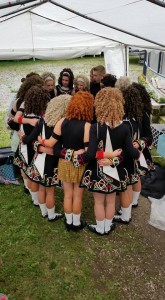
No you don’t have to be Irish in order to Irish dance. Anyone who has an interest in dance, enjoys rhythm and movement, and likes to have fun can join! At Trinity Academy of Irish Dance, we have children from all backgrounds who dance with us, including children with special needs.
The feis (Gaelic for festival):
A feis, (Pronounced “fesh”), is where most Irish dancers compete. They will typically compete within a team category or solo categories. At a feis you will hear the Irish music that is associated with the bouncy steps of the Irish Jig – which isn’t the only Irish dance, but the most recognizable. A feis will also offer competitions in music, singing, and even baking.
Irish dancing is NOT just for girls: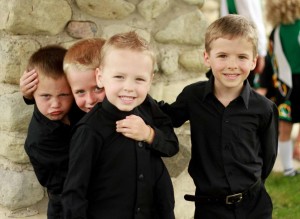
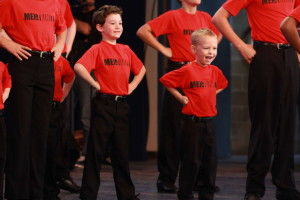 Like any form of dance, having representation from both boys and girls is what makes it complete. Think of Swan Lake without the prince, or Ginger Rodgers without Fred Astaire. Of course Irish dancing would be all-inclusive! In fact, at Trinity Academy of Irish Dance, we have a special program for our boys called Men of Trinity which is a supplemental program exclusively for our male dancers.
Like any form of dance, having representation from both boys and girls is what makes it complete. Think of Swan Lake without the prince, or Ginger Rodgers without Fred Astaire. Of course Irish dancing would be all-inclusive! In fact, at Trinity Academy of Irish Dance, we have a special program for our boys called Men of Trinity which is a supplemental program exclusively for our male dancers.
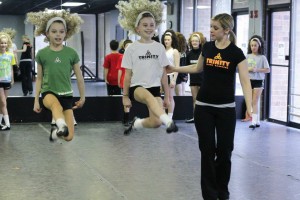 Irish dance only uses your legs:
Irish dance only uses your legs:
For the most part this is true. In traditional dances, arms should be firmly at your sides — it’s what makes Irish dancing so recognizable. Dancers dance with crossed feet, up on toe, arms to their sides, shoulders back and looking straight ahead.
There is no firm explanation as to why this is done, however many believe it to be linked to the Catholic Church – which was quite powerful in Ireland many centuries ago. It is believed that the priests disapproved any use of hand movements in dance, as it was too sensual and believed it to be sinful – or an invitation for the devil.
Of course while modern Irish dance does tend to nod to tradition – there are certain group dances and tailored modern Irish choreography in which arms are utilized.
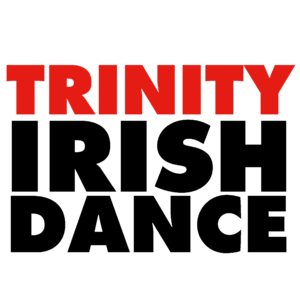
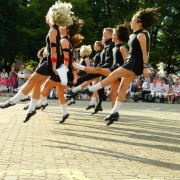
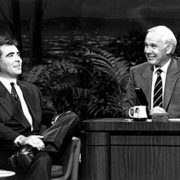
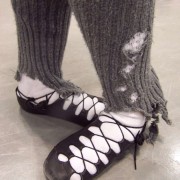
Leave a Reply
Want to join the discussion?Feel free to contribute!